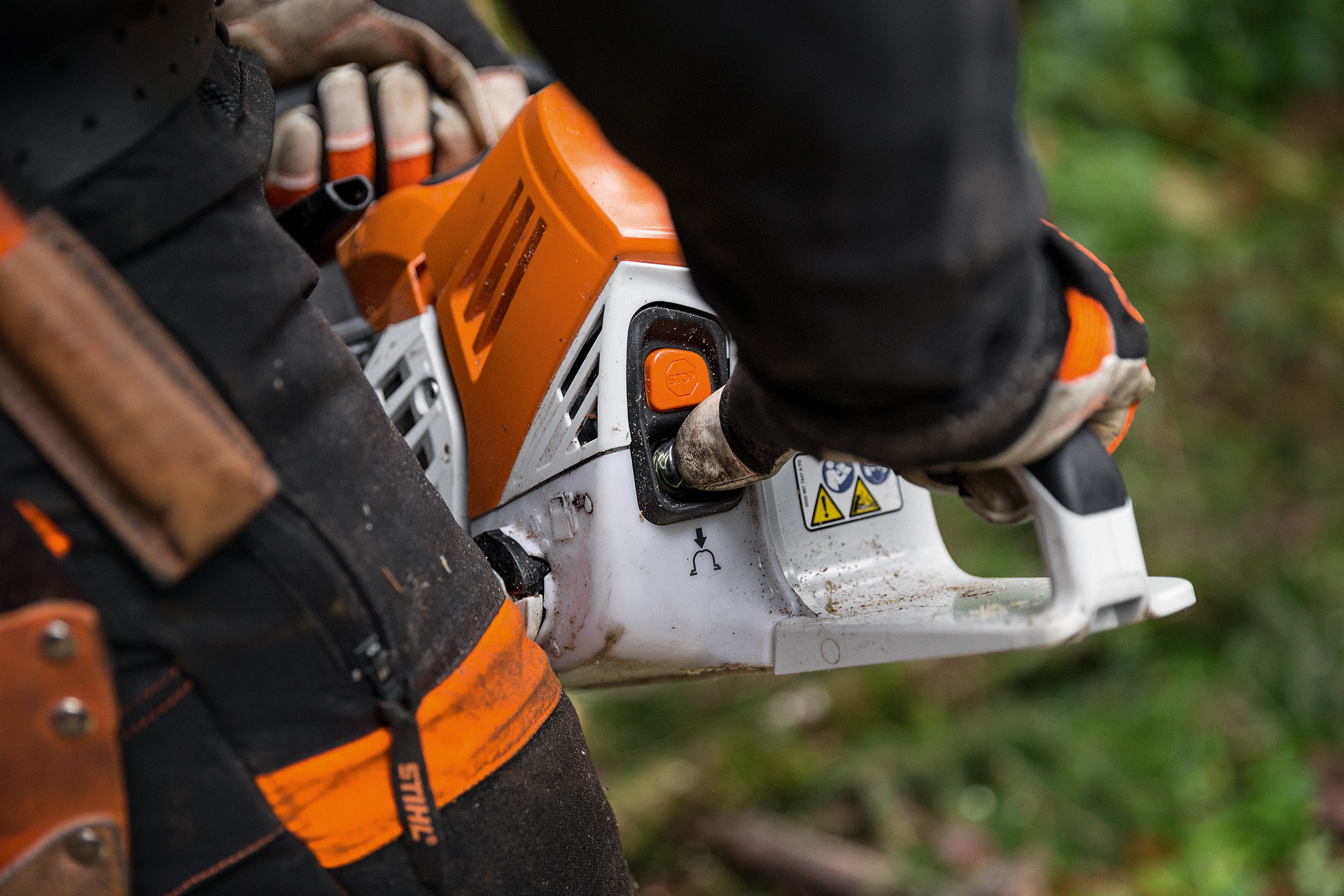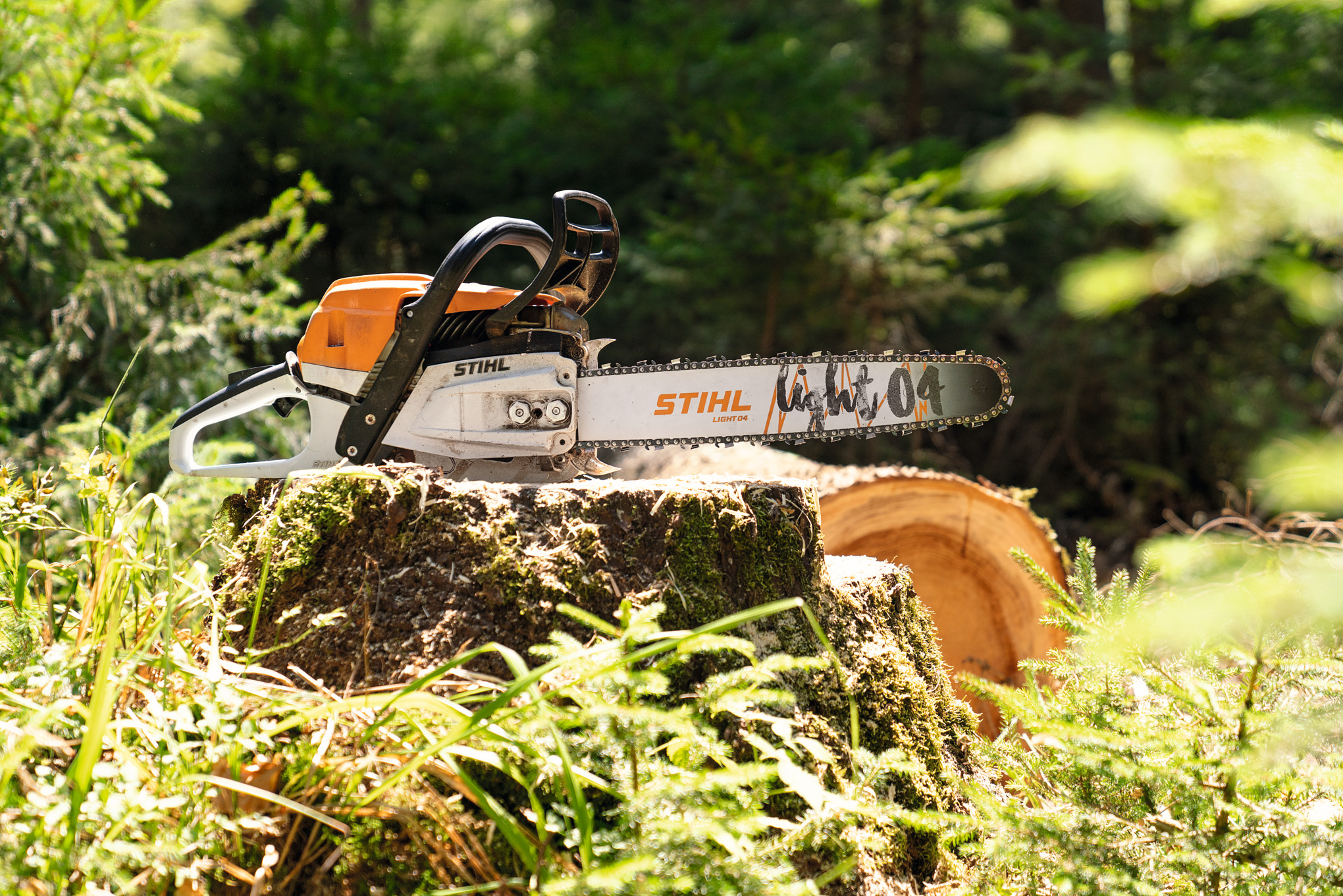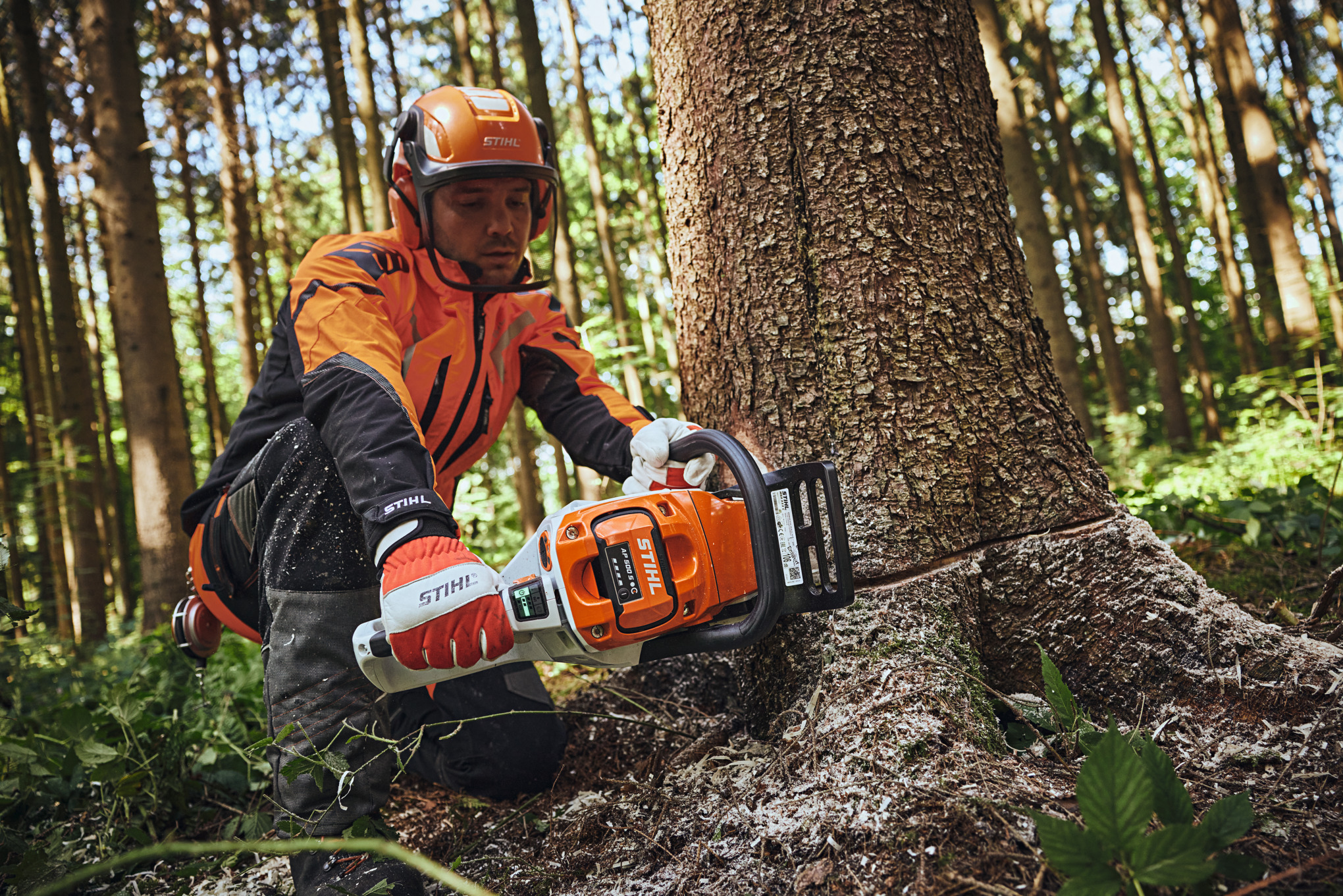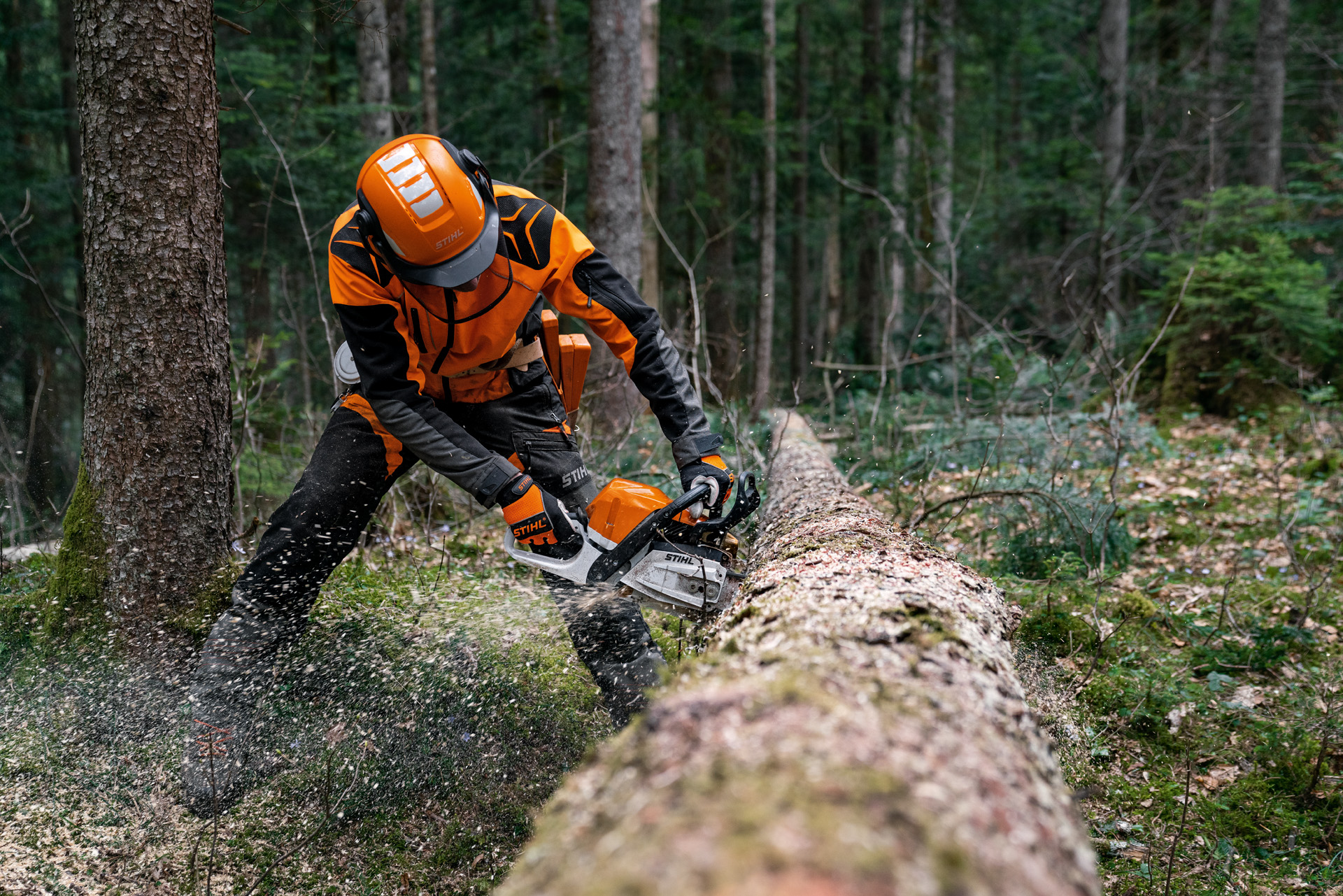Fuel injection technology: extraordinary power for professional work
Fuel injection technology makes engines light and efficient – and turns a STIHL tool into a powerhouse that professionals can rely on.
15.10.2024

A new league: power tools with fuel injection.
STIHL innovation harnesses the possibilities of fuel injection systems, creating powerful tools that need no carburettor.
What is fuel injection?
Fuel injection technology is a system for channeling the fuel-air mix into the cylinder of a combustion engine. In terms of the function it serves, it is an alternative to the carburettor, and has long been preferred in car engines. A better understanding of fuel injection requires an overview of how an engine functions.
Oxygen: the key to engine performance
Achieving optimum engine performance not only relies on the fuel you use, but also the quantity of air it is combined with. Much of the fuel circulating inside an engine acts as a catalyst, helping the oxygen in the air to react with hydrocarbon particles in the fuel. Consequently the key requirement for fuel in an engine is that it is in the right place at the right time – as well as in the right quantity. Only a perfectly proportioned air-fuel mix guarantees quick, complete combustion, and enables the engine to operate to its full potential. The key to designing high-performance, reliable engines is in ensuring this mix is right.
Carburettor vs. fuel injection
One way of providing the perfect air-fuel mix in an engine is via a carburettor. This is long-established technology that is deceptively complex; a carburettor is a mechanical component that mainly relies on the pressure differential between intake pressure and atmospheric pressure. A correctly tuned carburettor runs smoothly, but there is a need to be aware of factors which could have a negative effect on the carburettor’s function. These include fluctuations in altitude and temperature, a contaminated air filter, engine wear or fuel quality. Choosing a machine with M-Tronic technology can help to deal with these external factors, or there's another option - fuel injection.
While a carburettor makes use of differences in pressure to mix fuel with air, fuel injection technology instead delivers fuel directly into the crankcase via an injection valve, or directly into the intake manifold – as is the case in the groundbreaking STIHL MS 500i chainsaw. The injection pump keeps the fuel pressure constant, thereby ensuring that the fuel injection valve provides exactly the right amount of fuel at any point during use.
Fuel injection system types
There are a few different ways that fuel injection can be implemented, and we've summarised them into the three main categories:
This describes fuel injection systems that inject the fuel mix directly into the combustion chamber.
In this type of system, the fuel is injected directly into the crankcase at an early stage of the compression process. An advantage of this approach is that it means the injection pressure that needs to be overcome is relatively low. Atomisation and heating of the fuel is achieved by the piston’s motion to the top dead centre, and the increased compression that results from this motion. This type of fuel injection system is used in the STIHL TS 500i cut-off machine.
This type of fuel injection system is also known as manifold injection. Fuel is injected into the engine’s intake manifold, from where the piston takes in the prepared fuel-air mix. With this method, the fuel-air mix can be fed to the piston extremely efficiently, which is of huge benefit to internal cooling. The revolutionary STIHL MS 500i chainsaw includes this fuel injection system. Read on to find out more about this extraordinary innovation.

The first chainsaw with electronic fuel injection: the STIHL MS 500i
The STIHL MS 500i chainsaw is the first mass-produced chainsaw in the world to feature electronically controlled fuel injection. This chainsaw offers unparalleled performance thanks to the sensor-controlled fuel injection system in the engine that self-adjusts to always provide optimum power. The technology offers countless benefits to tool users, and STIHL is breaking new ground in this area of innovation.
The lack of carburettor and carburettor components means the MS 500i is exceptionally lightweight, and at 1.24 kg/kW is by far the best power-to-weight ratio on the market. High-capacity forestry professionals can depend on the STIHL chainsaw with fuel injection to offer noticeably more power than other models in the 80cm3 class, along with rapid acceleration and optimum start-up behaviour, whether from a cold or warm start.
To optimise the fuel injection process, a number of sensors are installed in the powerhead crankcase. These include an external temperature sensor, a pressure sensor, and a temperature sensor to gather information on environmental conditions, which is passed to the chainsaw control unit. The sensors also record data that the control unit uses to calculate the intake air mass, making it possible to determine the perfect fuel injection quantity required for optimum combustion with greater accuracy than a carburettor ever could.
Another innovative technological detail in the fuel injection system is the generator, which produces power but is also used as a sensor. By means of the alternating current the generator produces, it provides information to the control unit about the speed of the machine and the position of the crankshaft – both essential to the fuel injection function. This enables the fuel injection control unit to very precisely determine the operating status and fuel requirement, and then adapt the fuel injection system and ignition to cope with the environmental conditions.
This process happens very quickly - in the space of milliseconds. Fuel injection ensures easy starting, optimal acceleration and maximum performance throughout your working day. There’s no need to think about cold starts, warm starts or any other manual settings on the chainsaw, as the electronics take care of it for you.
Advanced technology for stress-free work
Using a fuel injection system makes light work of any job, as the engine has been comprehensively developed and designed to be lightweight with optimised displacement. The generator in the MS 500i means that the conventional flywheel magnets are not required and the control unit is positioned directly on the flywheel. This design enables further efficiencies in cooling, which has made it possible to use a smaller flywheel than in conventional chainsaws of the same category. The extra flywheel mass required for idling is provided by a steel ring below the fan blades, which not only supports the reduced flywheel size but also reduces the crankshaft load, further reducing overall weight. The position in the tank housing of the injection control unit also offers optimum displacement, weight and centre of gravity – thereby additionally contributing to a compact and lightweight injection engine.
Summary: STIHL MS 500i chainsaw with fuel injection
- The best power-to-weight ratio on the petrol chainsaw market: 1.24 kg/kW
- Extraordinary acceleration: from idle to maximum engine speed in just 0.25 seconds
- Optimum engine performance in all conditions
- Unrivalled start-up behaviour in any weather and at any altitude
- Straightforward start-up sequence without starter lever
- Operation without manual adjustment



